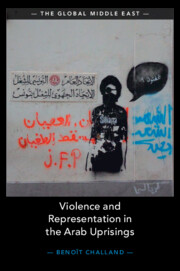Book contents
- Violence and Representation in the Arab Uprisings
- The Global Middle East
- Violence and Representation in the Arab Uprisings
- Copyright page
- Dedication
- Contents
- Maps
- Figures
- Tables
- Acknowledgments
- Prolegomenon: A Two-Layered Book
- Introduction
- Part I The Making of Latent Citizenship
- Part II Informal Revolutionary Practices (2011–2014)
- Part III Embattled Revolutionary Legacies (2014–2021)
- Sources and References
- Sources and References
- Index
Introduction
Published online by Cambridge University Press: 02 February 2023
- Violence and Representation in the Arab Uprisings
- The Global Middle East
- Violence and Representation in the Arab Uprisings
- Copyright page
- Dedication
- Contents
- Maps
- Figures
- Tables
- Acknowledgments
- Prolegomenon: A Two-Layered Book
- Introduction
- Part I The Making of Latent Citizenship
- Part II Informal Revolutionary Practices (2011–2014)
- Part III Embattled Revolutionary Legacies (2014–2021)
- Sources and References
- Sources and References
- Index
Summary
Why connect state violence with representation? The book proposes a rethinking of democratic theory based on the Arab Uprisings of 2011, also known as the Arab spring. The introduction provides definitions of the key concepts of representation, democracy, participation and civil society, and describes the sources and methods. The book argues that cultural representation and political representation come together through the theme of violence. Historically the means of coercion have been turned against Arab citizens; in 2011 these citizens proposed that democratic accountability be added to the management of legitimate violence and state coercion.
- Type
- Chapter
- Information
- Violence and Representation in the Arab Uprisings , pp. 11 - 52Publisher: Cambridge University PressPrint publication year: 2023
- 2
- Cited by

